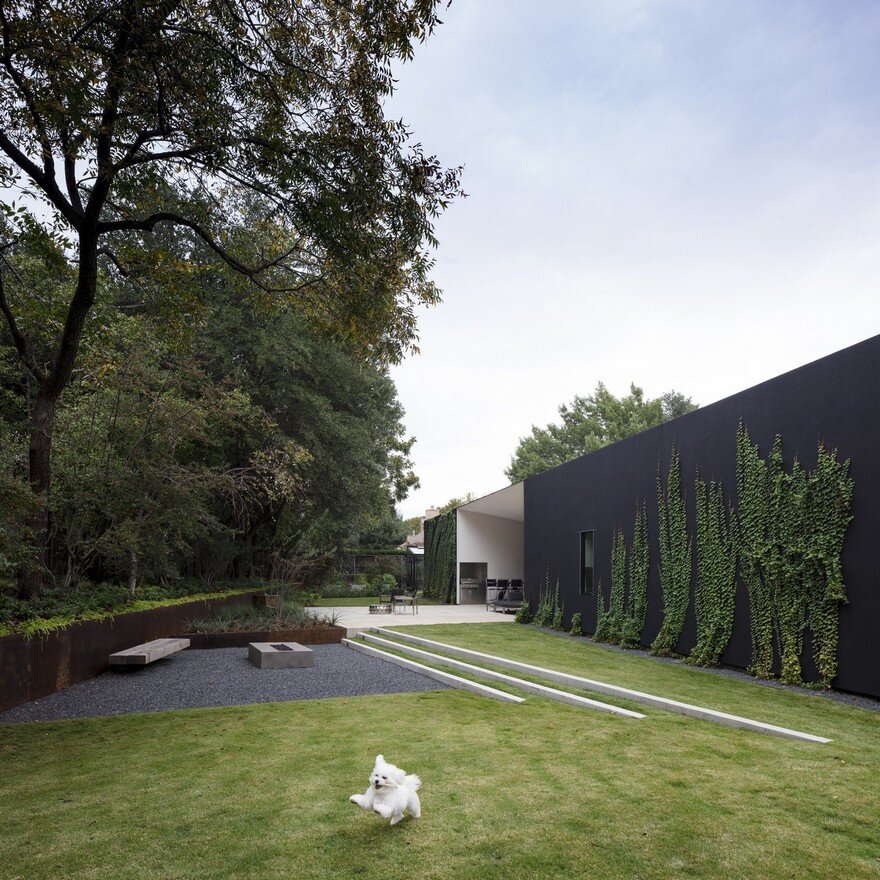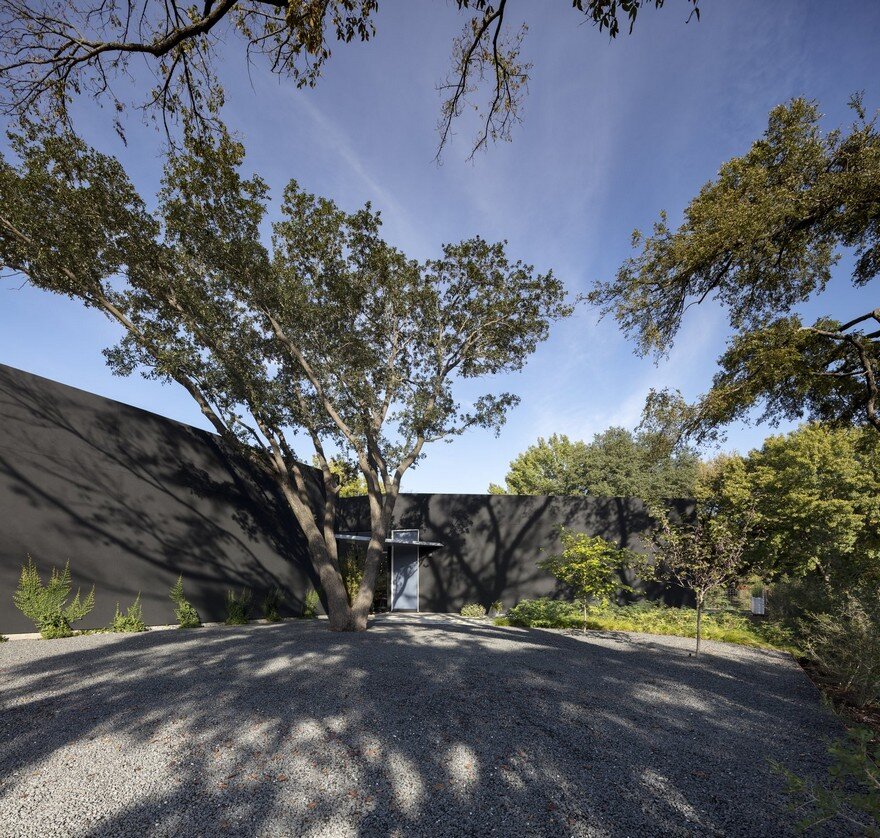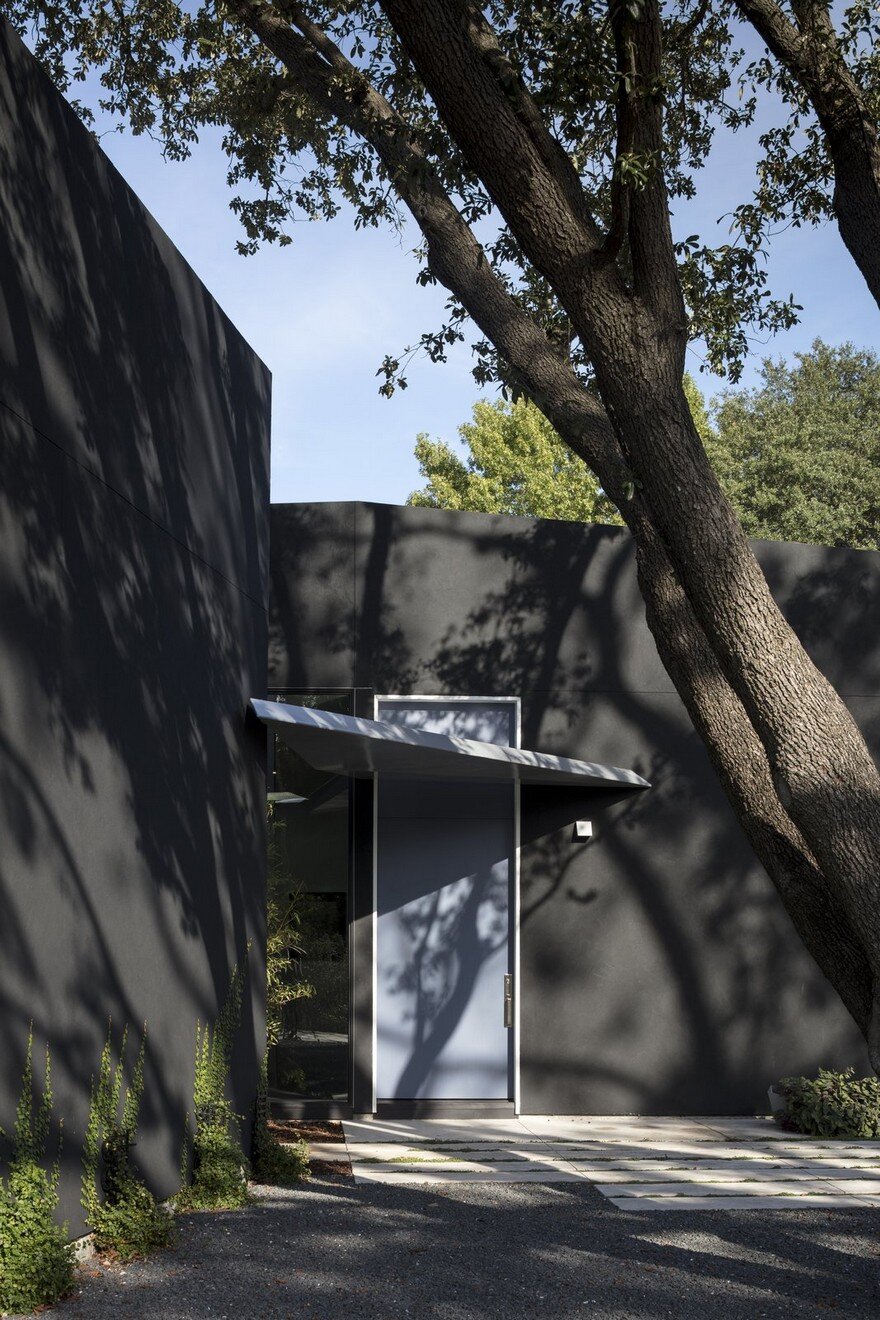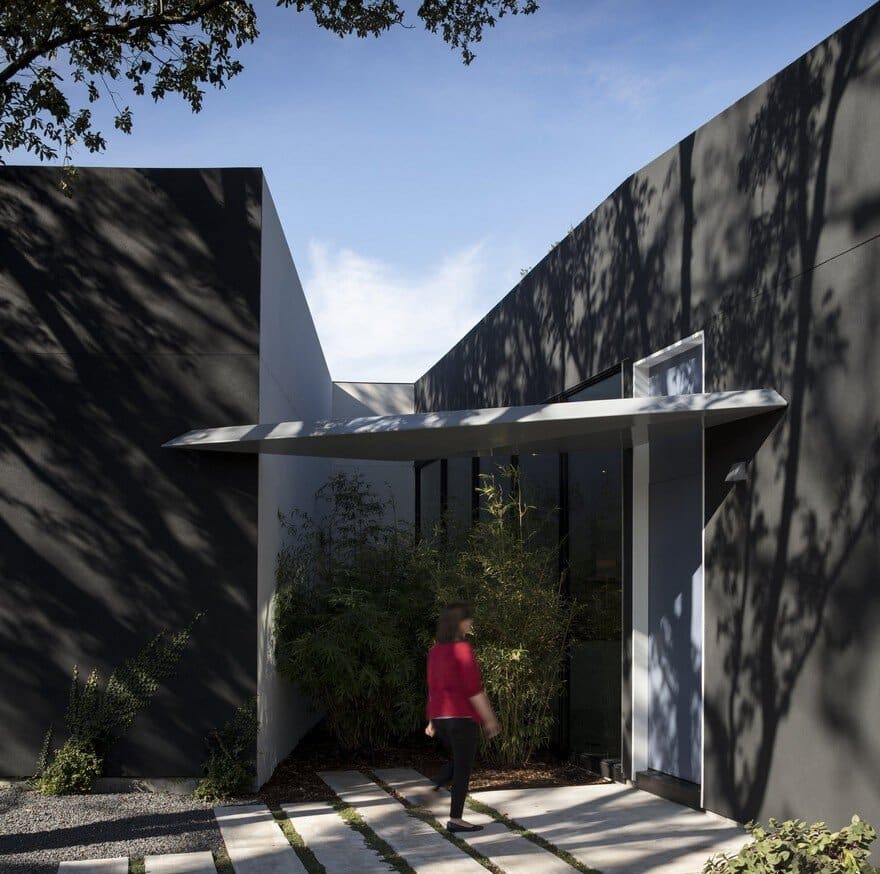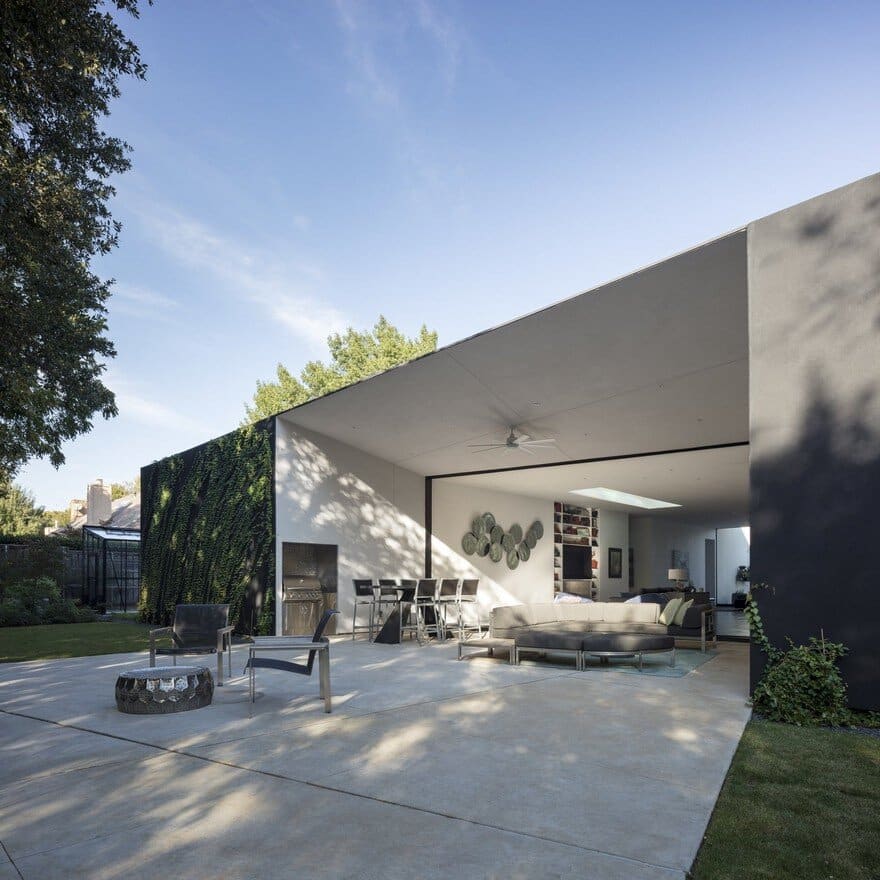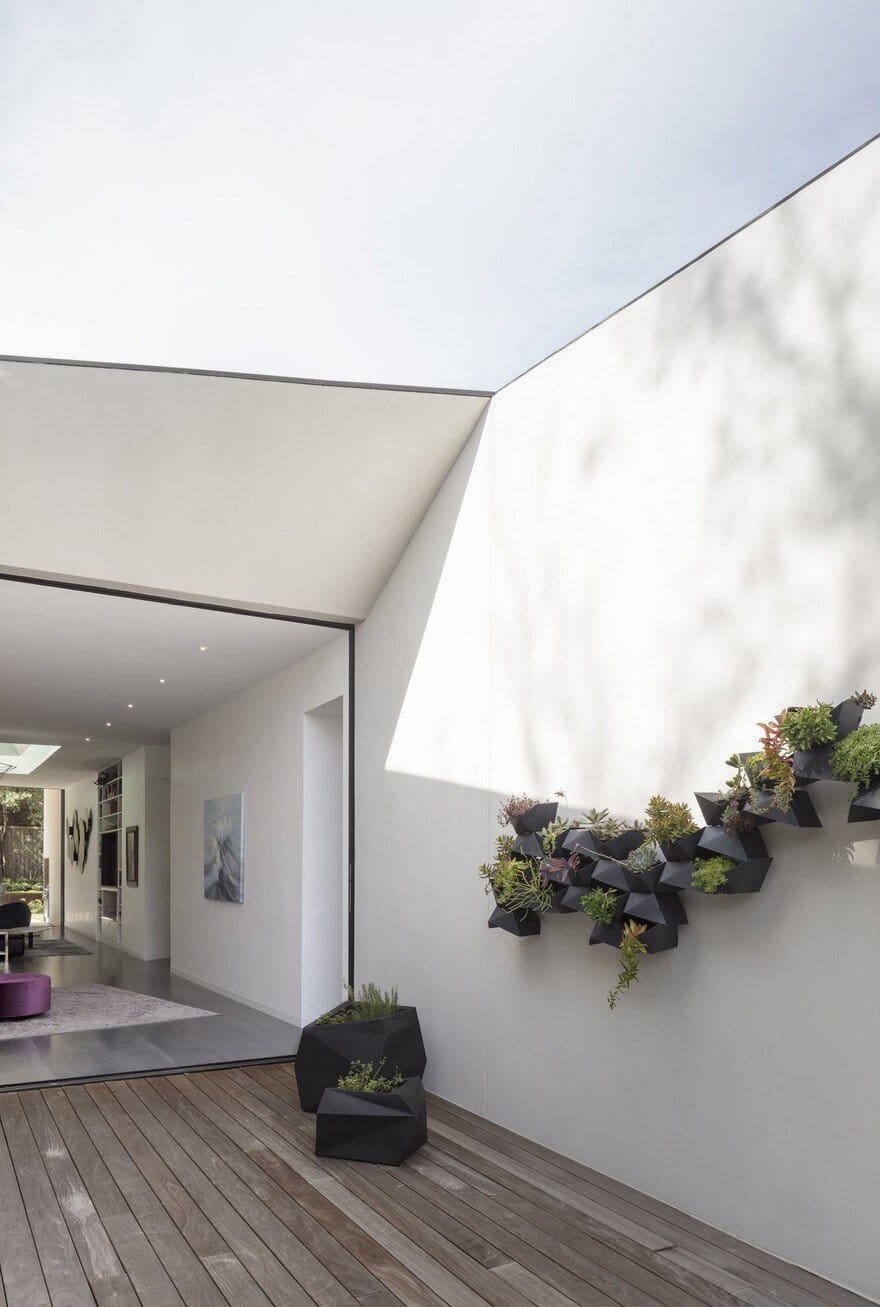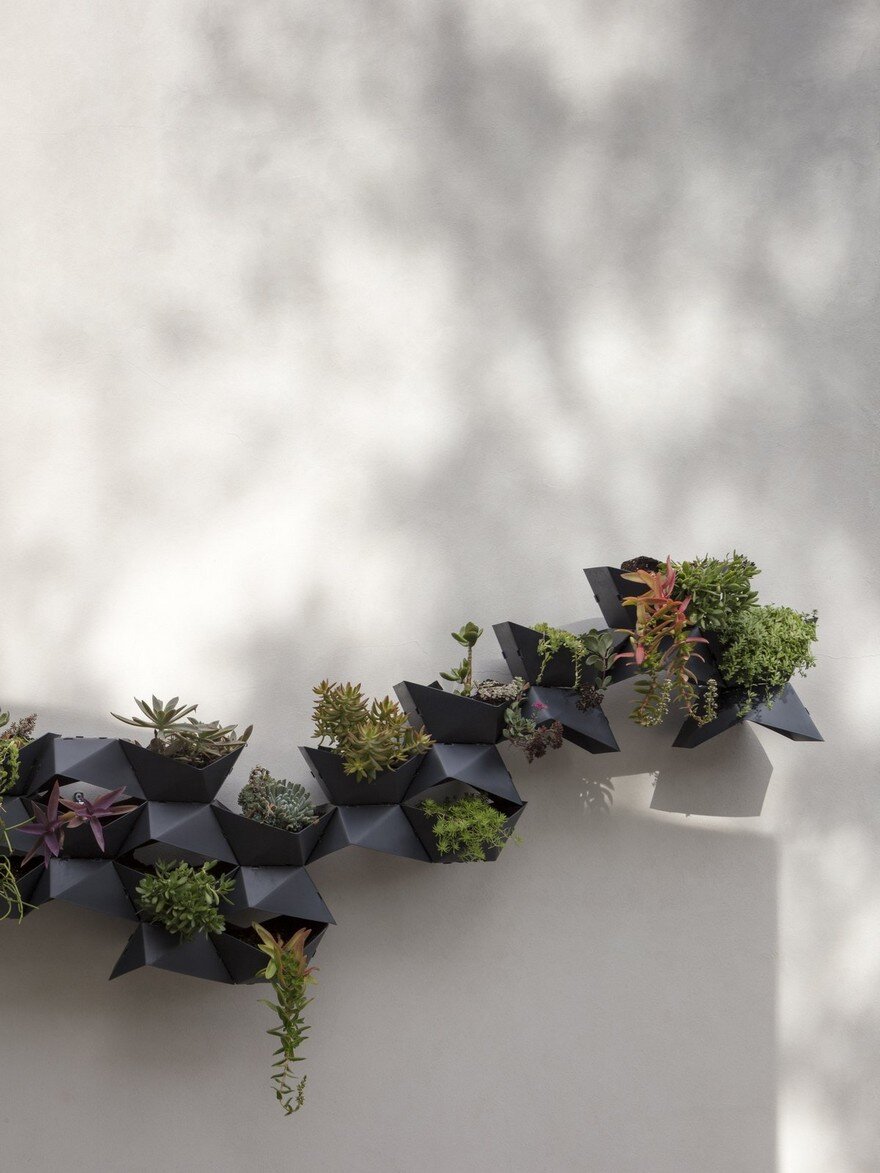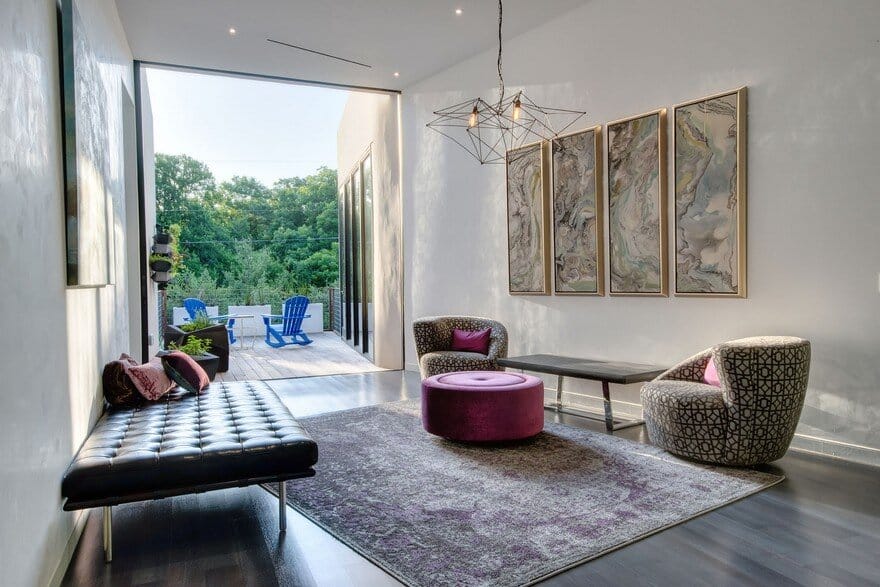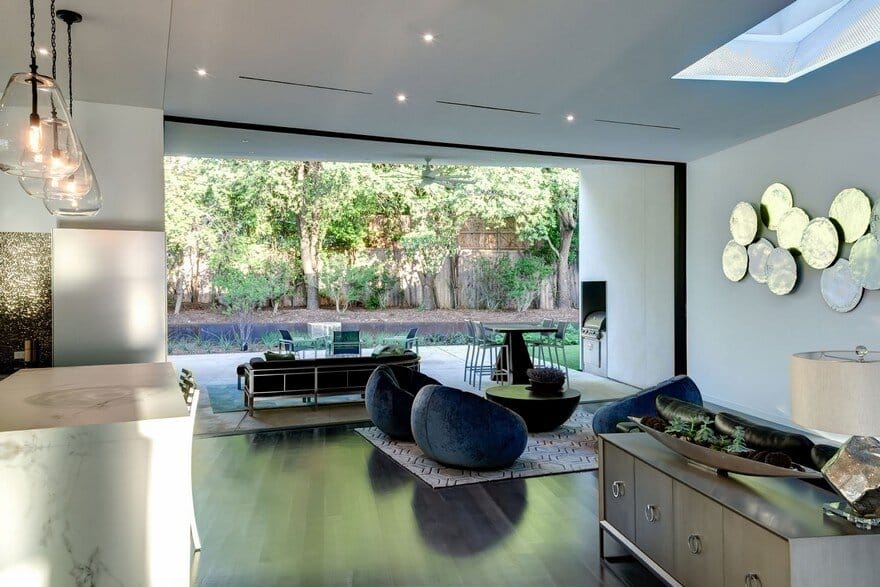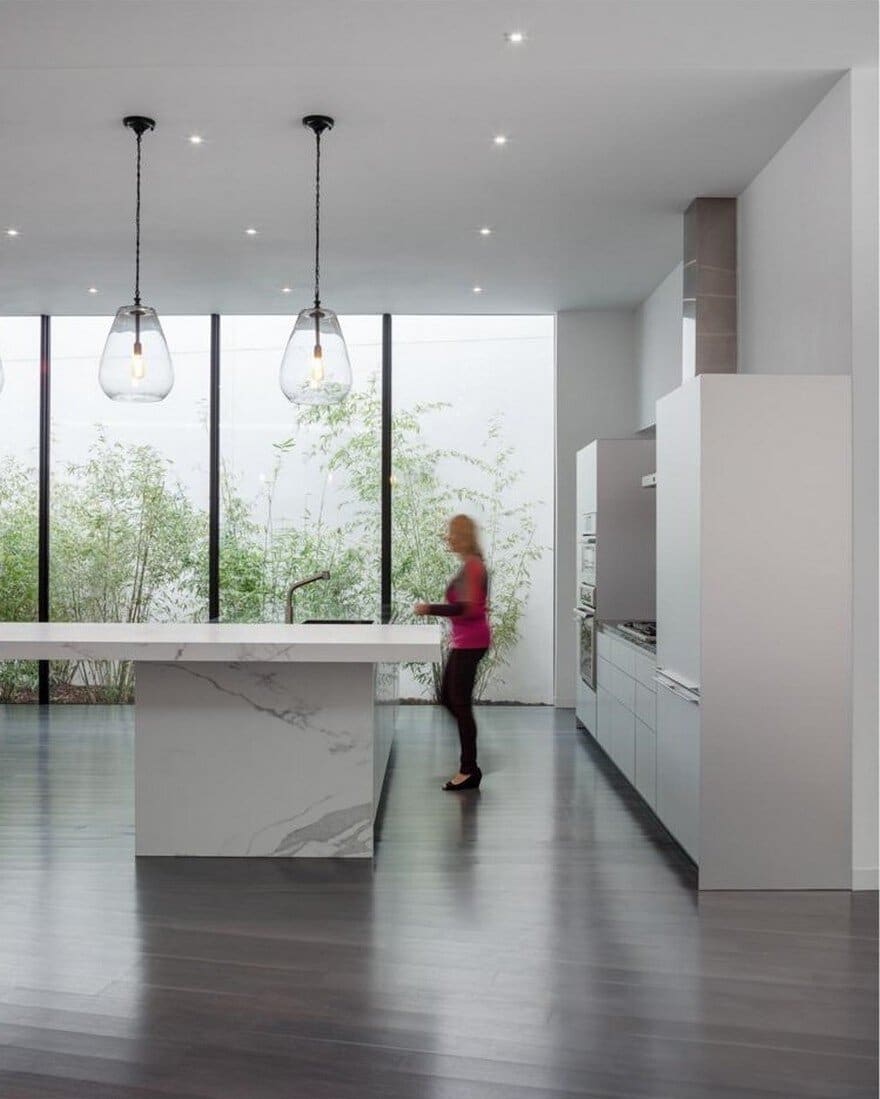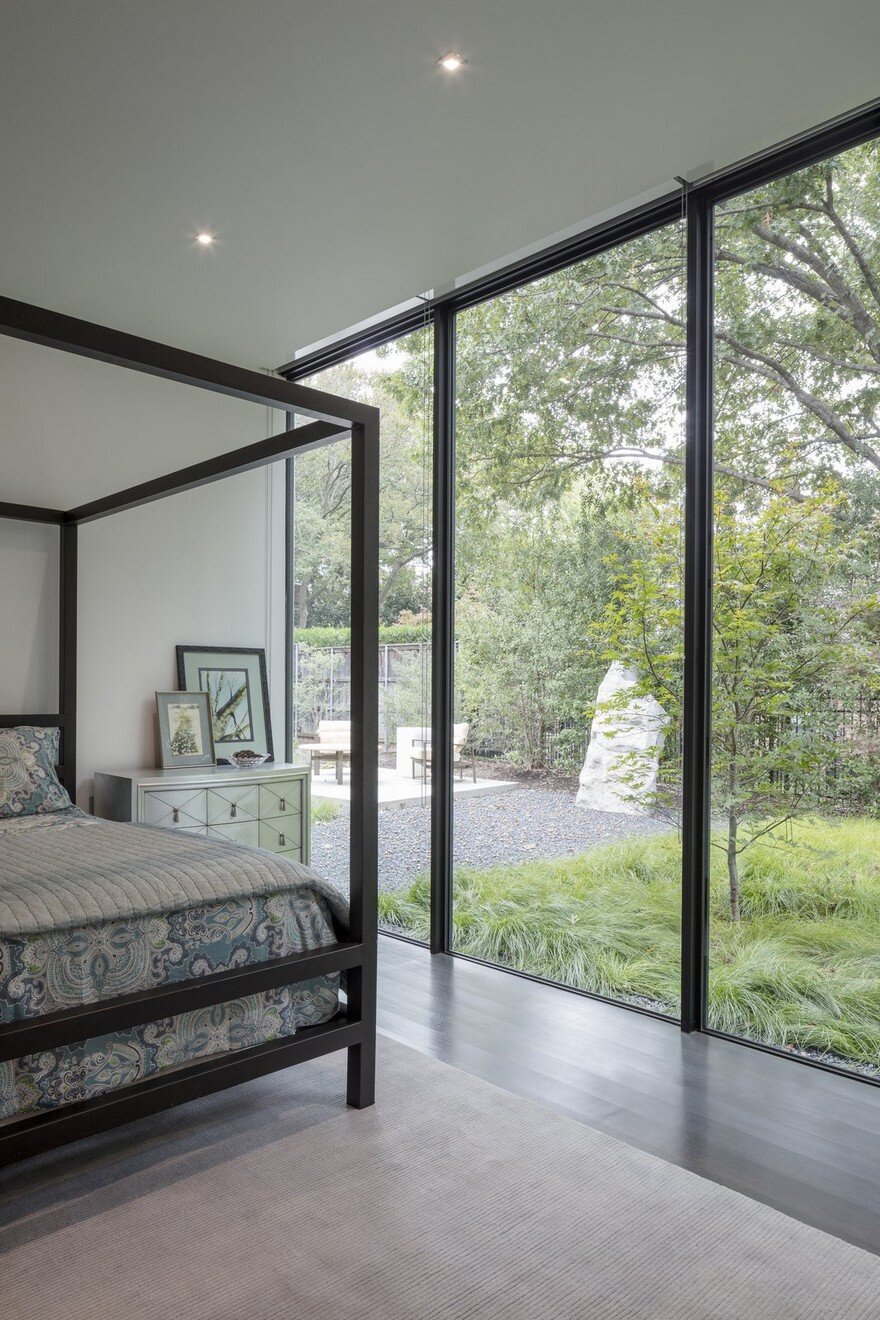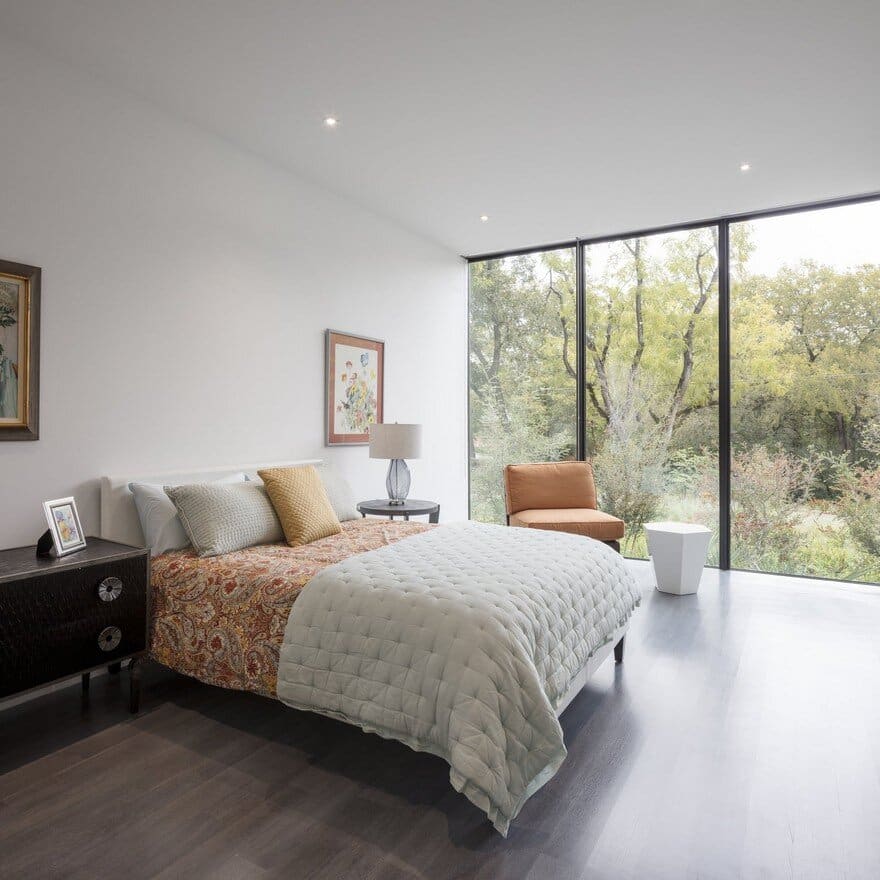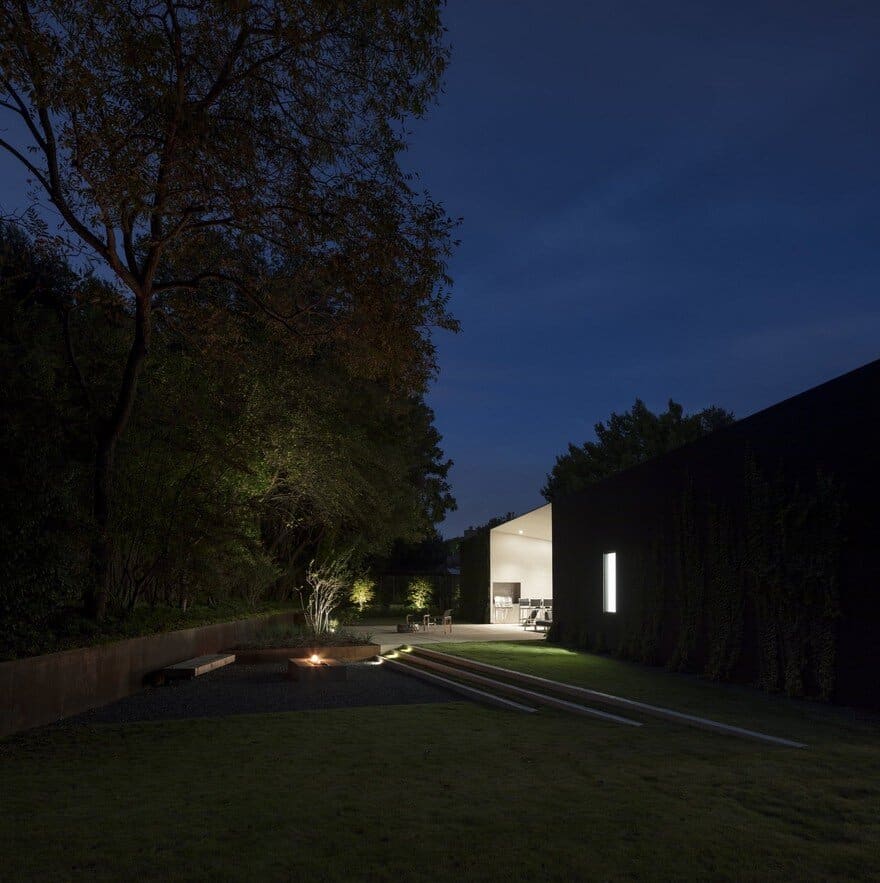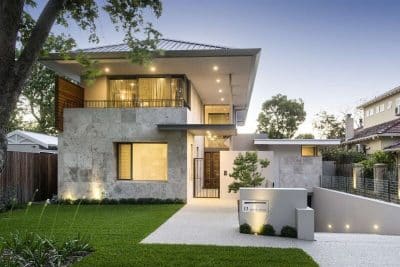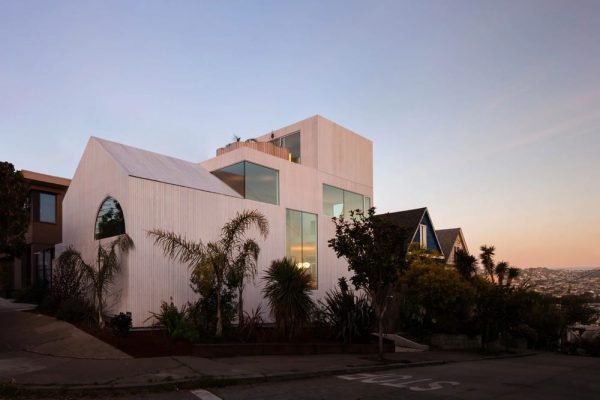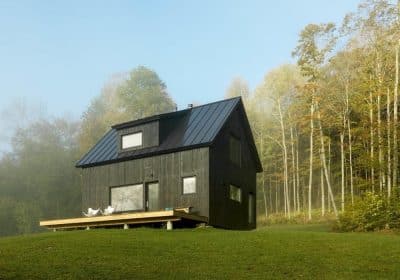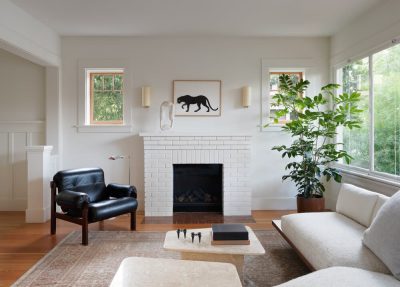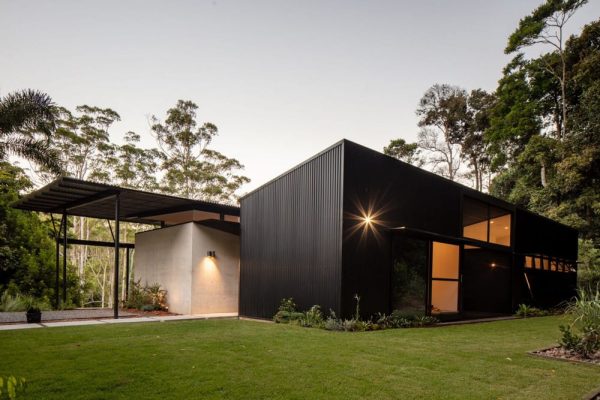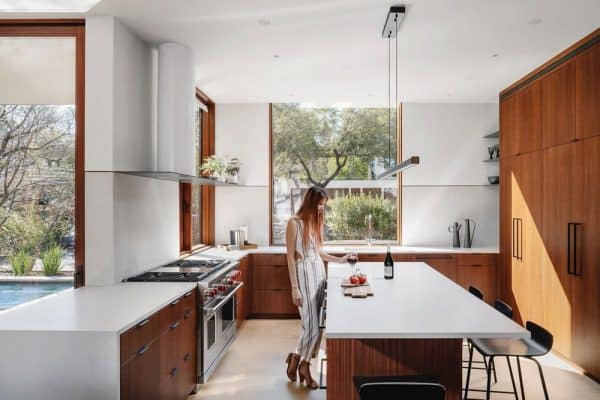Project: Winnwood Residence
Architect: 5G Studio Collaborative
Location: Dallas, Texas, United States
Area: 4600 square feet
Photography: Adam Mork
Text by 5G Studio Collaborative
Located on a wooded lot directly across from a land & water conservation project funded by the Texas Parks & Wildlife Department & the US Department of Interior, the residence was constructed on a previously developed infill lot within close walking distance of a wide variety of community resources.
The materials from the home which previously occupied the lot were recycled or donated in lieu of being sent to the landfill. Sustainable construction strategies include a thorough durability management plan, construction waste management, installation of sustainable materials, and indoor contaminant control.
Rainwater is collected and redirected from the roof to underground cisterns and is used to irrigate landscaping. By minimizing areas of turf grass and using native and adaptive species the amount of water used to maintain the site is significantly reduced. The total area of impermeable paving onsite is limited, so the quantity of stormwater runoff from the property is minimal.
To create a tighter building envelope, all of the home’s insulation is spray foam, and the R-values specified for the insulation are much higher than the values prescribed by energy code. Additionally, each room is individually insulated to take advantage of smart thermostats which allow spaces to be isolated or turned off, effectively creating an independent building envelope for each room.
Since heating and cooling account for about 50% of the energy used by a conventional home, efficiency is gained by using a geothermal heat pump system. A geothermal system is typically around 30% more efficient than a building with a conventional mechanical system. This is achieved by using close loop wells dug 250′ into bedrock. The constant temperature of rock allows pumped water to be heated or cooled (depending on the season) using far less energy than a conventional mechanical system.
The high efficiency mechanical system utilizes filters with a rating of MERV 13. For reference, the typical blue air filter has a rating of MERV 2; this only traps pollen, fibers, and dust. MERV 13 filters are used in hospitals and general surgery rooms, trapping mold, dander, lead dust, auto emission particulates, bacteria, and most smoke and insecticide dust.
About one third of the building envelope is glass, and while the home is designed to allow daylight to fill all areas of the home, any direct solar heat gain is very limited. Over 41% of the home’s glazing faces north, and 84% of the remainder of the home’s glazing benefits from significant exterior shading in the summer months when the sun is the highest in the sky. Any glazing exposed to direct solar heat gain during cooling months benefits from the glazing have a low solar heat gain coefficient of 0.29. The interior is lit with highly efficient LED lights, and dimming systems allow for light levels to account for incoming daylight from expansive windows.
While building systems and components aim to conserve energy, only with onsite energy production can the home be zero-energy. On the roof, a discrete 10kW solar array will annually create enough electricity onsite to offset all of the energy consumed by the Winnwood residence.
The Winnwood project did not start with the goal of pursuing LEED Platinum certification or becoming a zero-energy residence – the original intent was to create a sustainable, efficient home. However, after numerous design meetings and collaboration with the owner, architect, engineers, and contractor the team realized that the project was a zero-energy residence which was able to pursue LEED Platinum certification.

